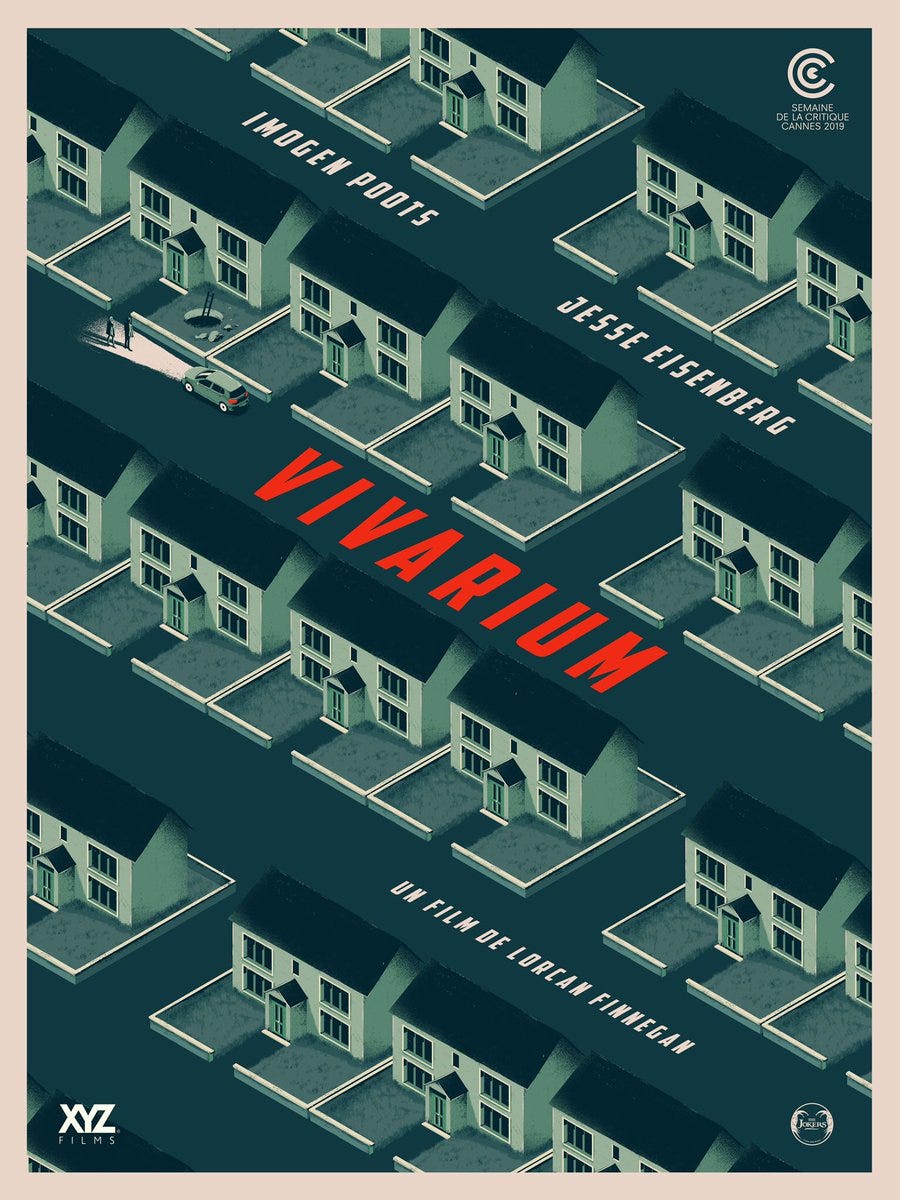What makes a good horror piece lies within its ability to not only frighten, but also bring otherworldly discomfort, and make you feel like you’re in constant danger. Following the events of 2020, a new genre of horror has emerged that preys upon a newly developed yearning among the masses: nostalgia.
Hello loyal readers! Today we will be showcasing an underexplored, relatively new genre of horror that has been taking the internet by storm: media horror.
As a reminder, your feedback is critical to the success of Thunderous Fantasies. Be sure to check the link here for a survey so I know what kind of content you like to see.
https://thunderousfantasies.substack.com/survey/1996110
A New Form of Horror Joins the Scene
Media Horror takes on a unique form of story telling by applying a perspective in the forms of recorded (“lost”) media, either with audio recordings or using footage from old cameras. One of the earliest examples of this is done by the film “Blair Witch Project,” where its entire film is recorded using a camcorder. It was much later when this method was applied with Cloverfield. Following another wide gap, we then saw an emergence of horror content following the events of the COVID lockdowns.
We also saw this form of storytelling applied in the horror video game “Outlast.” However, it wasn’t until 2022 when both the “Mandela Catalogue” and Kane Pixel’s “Backrooms” series quickly popularized the concept of media horror (or more specifically analog horror.) What made these two productions go viral arguably lied with the nostalgic elements they played into, while presenting wholly unique themes, twisting nostalgia by pushing their audiences towards the uncanny valley. Many more analog horror channels quickly rose on YouTube, and media horror quickly became a staple for many.
Gaslighting on a Cosmic Scale
Modern inspirations for this media horror genre originates with something called “The Mandela Effect,” which is an idea that humanity somehow shares a collective false memory about certain details or events that never truly occurred. This has led to a wide variety of explanations that try to explain this phenomenon, whether it would be conspiracy theories about parallel universes or the government trying to change history by an elaborate gaslighting campaign, or some strange fluke of miscommunication over the years. A few examples of the Mandela Effect include the classic children’s book series “The Berenstain Bears,” the logo of Fruit of the Loom, and of course, Nelson Mandela’s death.
Media horror brilliantly takes the elements of the Mandela Effect to the extreme. They would use old footage of various scenes, be it interior designs or architecture and write uncanny and creepy stories, perhaps warping the imagery to remain almost recognizable to the reader, yet add just a sprinkle of details to make it off-putting.
The term “liminal space” has been a key element to the media horror genre, meaning in-between areas between destinations. A street is a liminal space between work and home. A hotel is a liminal space in time that you stay temporarily on your vacation. What happens when you’re stuck in these types of spaces? It drives discomfort, making you feel like an unwelcome interloper who’s overstaying your welcome.
Media horror often relies on liminal space as a way to drive tension. At first, a series of hallways may seem mundane, until the thought settles that it’s entirely abandoned, and for some reason they seem to go on without end – and more unsettling than that is when the walls fail to connect properly, adding strange gaps and crawl spaces as if a clumsy AI tried to mimic what the inside of a building should look like.
Sometimes you may find a house mistakenly built where it shouldn’t be. Or perhaps an entire neighborhood with a fake sky. Maybe you explore a strange staircase in the middle of a grassy knoll that led into a vacant mall misplaced in time and space, like from “The Oldest View.” What about in the movie “Vivarium,” where an innocent touring of a house entraps you in an endless maze of perfectly mirrored houses in nightmare suburbia?
Enjoying the article so far? Consider becoming a subscriber so you don’s miss out!
Another way media horror manifests this gaslighting element is through ARGs (augmented reality games.) Alternatively, they were called creepypastas. They often are formed by internet rumors about various subjects to design a fictious story that seems relatively plausible. The Lavender Town theme in the original Pokemon games inspired a fake haunting conspiracy. Sonic.exe was a horrific amalgamation of Sonic the Hedgehog, “discovered” in a corrupted game cartridge. Years ago, an app called Randonautica was created to offer you a random location for you to explore. However, an ARG was created around it by users claiming that will “give” you whatever your intent is, creating panic throughout the internet.
The Uncanny Valley
There’s a belief going around the internet about how humans developed a fear for the uncanny. This theory describes how humans may have faced predators that look and sound like other humans, but in fact aren’t. This theory is a staple among the analog horror series “Mandela Catalogue,” where doppelgangers emerge and take over a small American county. However, they were mostly imperfect, taking a disturbing and twisted for of a human with disproportionate features, and “glitchy” voices. This creative design did wonders establishing this series as a modern staple on YouTube.
This is the magic that media horror offers. You should feel at home with the world. You recognize what everything is here. Yet, it feels like you’re out of place, as if you’re physically stuck in time and space that you’re not supposed to be in, driving this indescribable feeling of tension, like a child who feels like they did something wrong and are about to be disciplined. The more you explore the liminal spaces through the protagonist’s camera, the more you begin doubting yourself and your own memory. You wander these places that have no end looking for an escape, as the audience sees your perspective through your camcorder. The longer you stay, the more maddening you feel.
Think about the soundtrack, “Everywhere at the End of Time” by The Caretaker. This soundtrack is a creative piece that depicts the stages of dementia, creating a uniquely disturbing experience for listeners by preying on the fear of losing our precious memories, fueling a dread that we may never return to those good times, and further cementing dread that our perception of reality will one day crumble, along all memories of our loved ones. Those same feelings of dread are enhanced by the media horror elements as the audience is helpless but to observe and experience as a third-party witness.
By taking something so familiar, yet tweaking it enough to make you uncomfortable, you realize that the real threats aren’t monsters, serial killers, or ghastly creatures, but instead the true threat is your own mind.
The Devil is in the (Lack of) Details.
Normally when it comes to film media, we strive for a crisp, clear, and highly detailed image for our viewing pleasure. However, there is an art to subverting what we experience. If done right, our brain fills in the gaps, much like how we exercise our third eye as we read. Take a look at this example of GTA 5 rendered with an AI model.
The original gameplay footage is highly detailed natively – you can even see the small bumps in the pavement. But with the AI filter, it renders the frames to make it identical to that of what you may watch in a real dashcam. Principles applied here, even though you take away some of the details, help immerse the viewer further by mimicking the imperfections of recorded media. This can help mask flaws of CGI, make monsters more scary and real, and can further immerse viewers in ways ultra-HD, 4k imagery cannot.
In those dark shadows of the corner, maybe you spot an evil creature. Perhaps there was a whisper of something you thought you heard. Your friend tries to tell you that he “definitely” heard something. Through astute obfuscation, your mind is tricked in this grand experience that other horror genres will just not be able to do properly.
Media horror has a lot of incredible potential. With its form factor and unique elements, it creates experiences that no other forms of horror can truly offer. Instead of preying upon the visceral fear of death, it takes you into the realm of the uncomfortable, making your very soul itch and panic. Sure, monsters may still exist, but the true threat lies within your own mind and your perception of reality, even forcing you to question your memories at times.
Do you enjoy media horror? Got any favorites? Let us know in the comments below!







